

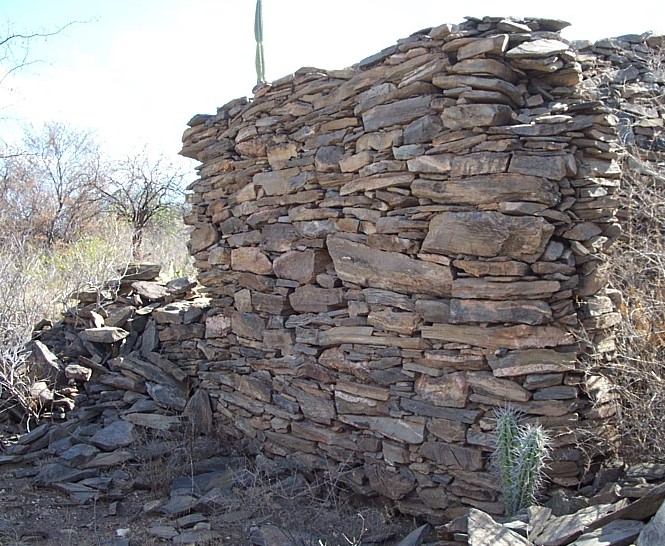
In our undertaking are walls dating from the 17th century built with "quilmes" principles, which is not normal unless they have been built on-site by people of that descent. Each wall has its signature when constructed, the "quilmes": wall of 60 cms wide to 80 cms. Constructed with two external bases or stones of very solid appearance, supported one to another without alloy. This type of wall is presented with a stone on each side of external wall "ligada" in the middle with stones incrusted like lock and ligature. The wall is locked inside, you can not see but from inside the building. Of this type of wall appear the three constructions in the middle of the building, used and recycled in cabins respecting the construction. Our guests coexist with history in rooms of 300 years or more.
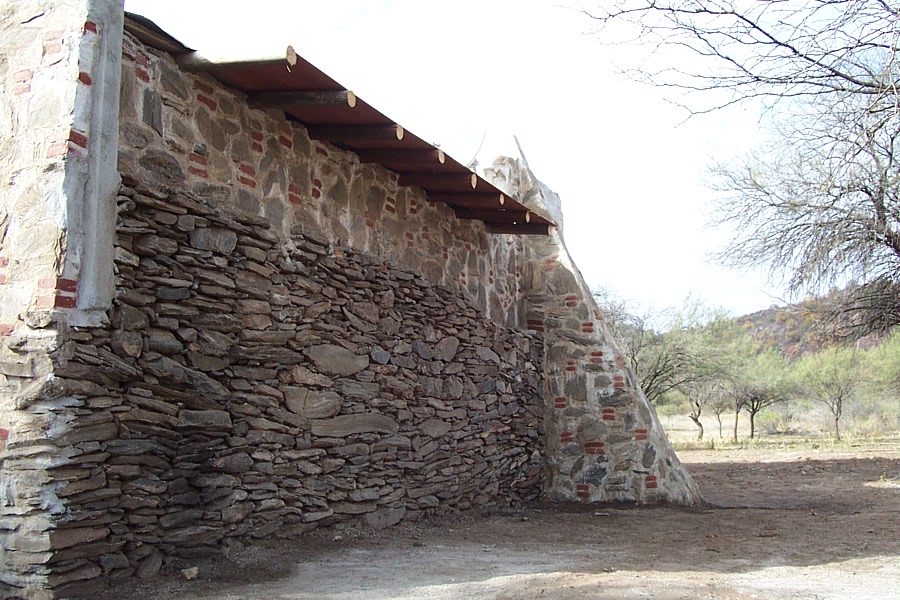
In addition in the new property of the strong place is begun the construction of a chapel with its respective tower or bell tower that with the course of the years it collapsed until a spectacular height of 4 meters, with which it is seen internally as it was constructed ; Leaving the Quechua influence in sight. The strange thing is the height by which we deduce that in turn they have had Jesuit influence. In our opinion Quechuas were constructed with Quechua forms but with an enormous height that demonstrates the ecclesiastical-Christian influence but there is no logic of such height. In the property we have recovered walls with an incalculable historical value and we need connoisseurs to be able to arm our history that is the one of our past. We have been influenced in the north of Cordoba, not only in Piedras Amontonadas of exquisite architectural works but also in the indigenous language, quechuismos , for example: "chacra", "quirquincho", "anchi" , "Antarca", "añapa", etc.
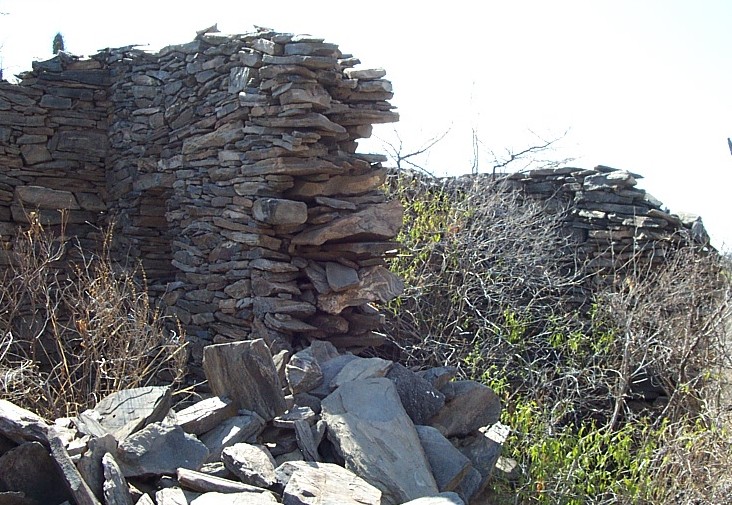
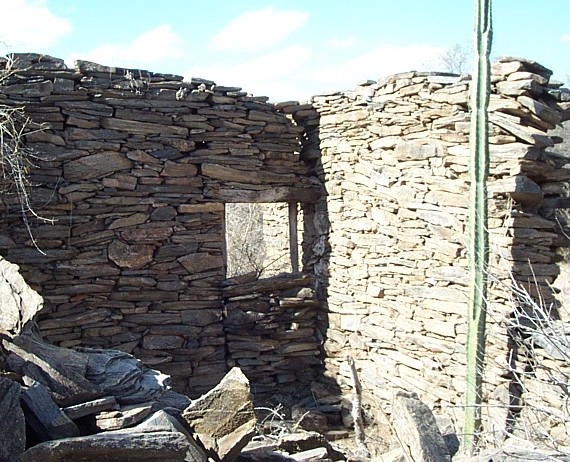
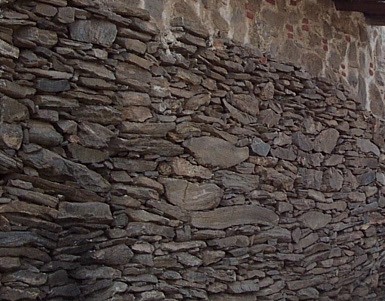
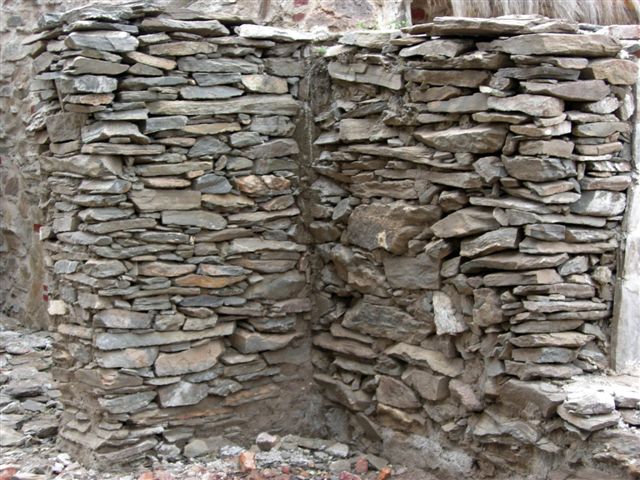
| Aca | From "aka": excrement | |
| Acheral | Field of acheras. | |
| Achira | plant. | |
| Achura | Of "acura": glands (giblets) | |
| Ají | Spicy ingredients, red and yellow | |
| Alcuco | Food with boiled wheat with water, salt, onion, squash and meat | |
| Aloja | Drink of carob or mistol fermented with water. | |
| Alpapuyo | Of "allpa": earth and "puhyu": "poncho de la tierra": haze. | |
| Amancay | Wild lily of northern Argentina. | |
| Amañarse | Cohabiting with the couple without marrying. | |
| Amauta | He who knows wise. | |
| Amichado | One thing attached to another. | |
| Amicho | Of "amichu": things closely united. | |
| Anchapi | Dish prepared with corn flour | |
| Anchi | Kind of sweet and sour mazamorra de boervir maize flour preparation of chicha | |
| Anco | Of "hangju": pumpkin | |
| Ancua | Of "hanka": roasted corn. | |
| Anta | American tapir. | |
| Antarca | Of "hantarhka": from back. | |
| Anucar | Hanukay: remove the chest from a child. | |
| Añuritay | My dear | |
| Apacheta | Heap of stone offered to the pachamama and that serves as a guide. | |
| Api | Porridge | |
| Apunado | The one who suffers from altitude sickness. | |
| Arrope | Thick, sweet, brown syrup that is obtained from corn, carob or chañar | |
| Baguala | "Bud or bud of love or tenderness", melancholy song of the valleys | |
| Balanchao | Ball made of mistol coated with carob flour | |
| Balapuca | Of wuala: round and "puca": red; Red hornet | |
| Cacharpaya | farewell. | |
| Cachi | Salt | |
| Callana | Container for toasting corn. | |
| Canana | Stone for grinding by rubbing | |
| Cancha | Ground, space, place for ball game | |
| Cántaro | Clay pot to accumulate water, chicha | |
| Cápia | Variety of white corn. | |
| Carancho | bird of prey. | |
| Carchi | small dog. | |
| Carpa | Tent to campaign that was made with leather. | |
| Caspinchango | Northern tribe. | |
| Cata | Parrot, lorita. | |
| Cayaschar | Corn harvest | |
| Chacha | Toy. | |
| Chachacoma | Plant that is used to cure puna disease, colds and toothache. | |
| Chacra | Extension of field suitable for cultivation. | |
| Chala | Rustic shoe | |
| Chalaco | Vulgar person | |
| Chalchal | Red fruit tree. | |
| Champa | Tepe, piece of land with grass. | |
| Chancaca | Tablet. | |
| Chango | Indigenous tribe. Indians of the great sticks or lances. | |
| Chañar | Spiny courlica, tree very appreciated by its medicinal fruit and its good firewood. | |
| Charqui | Lean meat uncooked - meat slice | |
| Chasca | Curly hair or plumage. | |
| Chasqui | Runner on foot - Messenger | |
| Chaucha | green bean. | |
| Chaya | Carnival of the valleys. Welcome party. | |
| Ches-ches | Overo-rosillo coat. | |
| Chicha | Liquor, usually brewed corn. | |
| Chichi | Breast nipple; Something that comes out | |
| Chilicote | the cricket. | |
| China | Indian or mestizo woman who is dedicated to domestic service. | |
| Chinchulín | Part of the small intestine of the bovine that is considered the most precious | |
| Chingar | Get lost, get up on one side. | |
| Chinitiar | To walk with the Chinese, to walk with women | |
| Chipá | Bread made with corn flour or cassava | |
| Chipaco | Split-wheat bread, kneaded with pickle and greaves | |
| Chiquero | Small farmyard for small farms, especially pigs and calves | |
| Chirimoya | Fruit of chirimoyo. | |
| Chiripa | Of cold chiri and pachaha. | |
| Choclo | Immature corn cob | |
| Choco | Shaggy dog with bow tail up. | |
| Cholo | half Blood. | |
| Choro | Of "tjuru" is pronounced "chúru": snail. | |
| Chúcaro | Horse without taming or scoundrel. | |
| Chulpa | Sarcophagus, object buried by ancient Indians | |
| Chulpi | Of "chhullpi" sweet corn sweet corn. | |
| Chunca | leg. | |
| Chunchuli | Intestines the small intestine. | |
| Chuña | Ash-colored bird. | |
| Chuño | Frozen potato between pieces of ice and then dried in the sun | |
| Churi | Boy | |
| Churqui | "Acacia cavenia"; Thorny bush. | |
| Chuschar | Of "chuhcha", hair, hair; Pull the hair. | |
| Chuso | Of "chu'usu"; Big or sucked or wrinkled. | |
| Chuspa | Small bag to store coca leaves | |
| Chuy | Expression of cold. | |
| Chuyo | Little thick, watery | |
| Chuzazo | Puncture with an acute object. | |
| Cimba | Braids that make women in the hair | |
| Coca | Bush whose leaves are chewed to combat puna, fatigue and hunger. | |
| Cocha | Of khocha: lagoon | |
| Cochayuyo | Seaweed | |
| Colla | Inhabitant of the Andean plateau | |
| Conchana | stove | |
| Cóndor | Species of vulture. | |
| Corota | Testicles. | |
| Corpachada | Feast of sowing in honor of pachamama on August 1st. | |
| Coto | empty. | |
| Coyuyo | Of "kúyu": cicada. | |
| Cuchi | Of "khuchi" pig | |
| Cuis | Of "khúwi": edible rodent resembling a guinea pig. | |
| Cumpa | Of "jumpach": compadre, companion, friend. | |
| Curcuncho | Of "kurkuncho": hunchback. | |
| Cuzco | Small dog. | |
| Garúa | drizzle. | |
| Gasta | (Quechua). (Aimogasta, chicligasta, timogasta, etc.) | |
| Guacamayo | Of "wacamayu": parrot. | |
| Guagua | Of "wawa"; Boy or girl. | |
| Guampa | Horn of cattle, wool or goat, horn, blade | |
| Guanaco | Comelid of northern Argentina. | |
| Guano | Excretory material of birds used as fertilizer in agriculture. | |
| Guasancho | Beaten back animal. Sunken, arched back. | |
| Guaso | rustic | |
| Guatiada | Of "huattiyay", roast, roast | |
| Haipa | Cart with wheels made of a log, without rays | |
| Hita | Bird lice. | |
| Huankar | Is the box also called hantun-tinya | |
| Humita | Spicy white corn meal, wrapped with choc chops | |
| Inca | Name given to the son of the sun. Emperor | |
| Inti | Sun, sun god of the Incas | |
| Ishpa | Of "isspa": urine. | |
| Llama | Mammal. | |
| Llica | Net or tissue | |
| Locro | Food made with corn or beef jerky, beans, squash and hot peppers | |
| Machu | Quechua voice meaning old, old | |
| Malón | It was the surprise assault of the Indians among enemy tribes | |
| Mate | Dried object was used to drink water or chicha | |
| Ñato | With or without a small nose | |
| Ochar | Barking in a certain way | |
| Ojota | Of ashuta or axuta Leather sandal or filament | |
| Orko | Also horco: hill. | |
| Pampa | Any plain that does not have arboreal vegetation, flat ground. | |
| Panza | belly. | |
| Papa | tuber | |
| Paschar | Action to put something down | |
| Patay | Kind of bread made with carob flour | |
| Pecana | Base of the indigenous stone mill | |
| Pichanas | Common name of the broom and bush. | |
| Pichanilla | Shrub that is used to form eaves of ranchos, pichanas, pirguas, tipiles | |
| Pilpinto | Small butterfly | |
| Pique | Flea, pig parasite. | |
| Piquillín | Spiny shrub and edible fruit. | |
| Pirca | Stone wall with or without clay | |
| Pircana | Stone or slab with which to cover the pot | |
| Piri | Food prepared with roasted wheat, which is then cooked just like the sanco | |
| Pisingallo | Variety of maize used to make porridge | |
| Pocoto | Solanaceous plant of yellow. | |
| Pokoipacha | Party of the carob tree. | |
| Poncho | Garment with a head hole covering the shoulders and trunk | |
| Poroto | Edible legume. | |
| Pucara | strength. | |
| Pucha | Exclamation of disappointment or failure. | |
| Pucho | Leftover, rest, small portion of some thing | |
| Puco | Clay bowl | |
| Pujllay | Play, have fun, doll that symbolizes the carnival. | |
| Puna | Plateau between 3700 and 4800 m. Of height. | |
| Pupo | belly button. | |
| Quellisisa | yellow flowers | |
| Quellosisa | Yellow flower plant. | |
| Quena | Flute (devoid of aeroducto) built with a tube of hollow reed | |
| Queñoa | Tree of hills, small and twisted of the rosaceae family. | |
| Quepi | Wrap of things, tied in cloth or rebozo | |
| Quillango | Blanket made with guanaco skin | |
| Quimil | Cactus very similar to the tuna. It is used to heal sting of poisonous vipers | |
| Quincha | Wall or ceiling made with bundles of reeds, branches and / or straw | |
| Quinua | Cereal of potent vitamin value | |
| Quirquincho | Small mammal covered with articulated shell | |
| Quitupí | Bird, also known as benteveo. | |
| Rabón | Animal that has the shortest tail or without tail. | |
| Requinto | Instrument similar to guitar but smaller | |
| Rumi | stone. | |
| Soba | beating. | |
| Suncho | Bush of yellow flowers that serves to fasten and to bind the sticks of the corral. | |
| Suri | American ostrich. | |
| Tata | Father, old, grandfather. | |
| Teque | Guanaquito, vicuñita. | |
| Tincunaco | Encounter or encounter. | |
| Tola | Resinous plant used as fuel. | |
| Torcaza | Torcacita, turtledove or urpilla. Small gray lead pigeon | |
| Tulpo | Meal of corn flour with sheep's fat and salt and ground pepper | |
| Tuna | Cactus plant, thorny, giving an edible fruit of the same name | |
| Tuquita | Bush, small plant. | |
| Tuy | Expression of heat. | |
| Umucutí | Lizard, boulengeri species that lives in much of the country. | |
| Upa | Stand up | |
| Ushutas | flips flops | |
| Uspallata | Land or peoples in ashes. | |
| Vicuña | Camelido of the Argentine north, similar to the guanaco and the flame. | |
| Vincha | Sash to tighten the horses | |
| Vinchuca | Nocturnal insect that feeds on blood; Chagas disease | |
| Vizcacha | Great rodent resembling the hare or the rabbit. | |
| Yaco | Water, watery, spring. | |
| Yapa | Give more, add. | |
| Yupanqui | great Sir | |
| Yuro | A vessel for storing liquids and especially for serving chicha | |
| Yuyo | Wild herbs | |
| Zanco | With roasted corn flour with "fatty catfish", salt, cumin and onion |